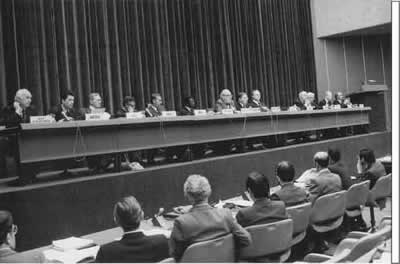
First Hypothesis
1824 French mathematician and physicist Jean Baptiste Joseph Fourier first hypothesizes that the atmosphere plays a significant role in mediating temperature on Earth Fourier, in the article “General Remarks on …
Read More →
Warming Predicted
1856 American scientist Eunice Foote predicts the warming impact of “carbonic acid” (carbon dioxide) on the atmosphere. Foote describes an experiment where she filled separate glass jars with water vapor, …
Read More →
Warming Demonstrated
1861 Irish physicist John Tyndall demonstrates experimentally that water vapor and other gases warm the atmosphere John Tyndall, in the article “On the Absorption and Radiation of Heat by Gases …
Read More →
Temperature Prediction
1904 Swedish scientist Svante Arrhenius concludes that the Earth’s temperature might increase by 5 to 6 degrees Celsius with a doubling of atmospheric CO2 Nobel Laureate Svante Arrhenius follows early …
Read More →
Emissions Estimation
1938 English engineer and amateur meteorologist Guy Callendar concludes that humans have added about 150,000 million tonnes of CO2 to the air over the previous 50 years “The artificial production …
Read More →
The Sea Around Us
1951 American marine biologist and writer Rachel Carson publishes the New York Times bestseller The Sea Around Us, including observations about pronounced warming in the Arctic regions of the Earth …
Read More →
Plass’ Theory
1956 Canadian physicist Gilbert Plass publishes a lucid explanation of “carbon dioxide theory” to account for “the general warming of the climate that has taken place in the last sixty …
Read More →
Plass Published
1956 The New York Times publishes a summary of the Gilbert Plass paper headlined “Warmer climate on the earth may be due to more carbon dioxide in the air” The …
Read More →
Oceanographers’ Proof
1957 American oceanographers Roger Revelle and Hans Suess demonstrate that CO2 levels in the air have increased as a result of the use of fossil fuels Roger Revelle and Hans Suess …
Read More →
First Mention
1965 Roger Revelle contributes to the first mention of global warming in a government report, drawing an analogy between human-produced gases entering the global atmosphere and the effect of glass …
Read More →
Presidential Acknowledgement
1965 President Lyndon Johnson states in a Special Message to Congress, “This generation has altered the composition of the atmosphere on a global scale through … a steady increase in carbon …
Read More →
First Computer Model
1967 Syukuro Manabe and Richard T. Wetherald are the first to use a computer model to explore the impact of increasing atmospheric carbon dioxide on the Earth’s climate Syukuro Manabe …
Read More →
EPA Formed
1970 President Richard Nixon establishes the U.S. Environmental Protection Agency, and the National Environmental Policy Act of 1969 takes effect President Richard Nixon’s Special Message to Congress in establishing the …
Read More →
Clean Air Act
1970 Congress enacts the Clean Air Act, in a near-unanimous endorsement of strong environmental protections In a remarkable show of bipartisanship, the Senate vote for the Clean Air Act is …
Read More →
Transportation’s Impact
1971 Development of supersonic transport raises concerns about impacts on climate, and the Climate Impact Assessment Program is created under the Department of Transportation Described as “the first major project …
Read More →
First Global Meeting
1972 The United Nations Conference on the Human Environment, meeting in Stockholm and attended by 113 nations, is the first global meeting of nations to consider environmental concerns The Conference …
Read More →
Limits to Growth
1972 The Club of Rome publishes Limits to Growth, a report that predicts that if current growth trends continue unchanged, the limits to growth on the planet will be reached …
Read More →
Keeling Curve
1976 Charles D. Keeling creates the “Keeling Curve,” a simple visualization of the longest continuous record of CO2 concentration in the world. A paper published by Charles D. Keeling of the Scripps …
Read More →
Warming Trend Noted
1977 The U.S. National Academy of Sciences releases a report that identifies a global warming trend caused by increased use of fossil fuels, and predicts that global temperatures could rise …
Read More →
Carter’s Energy Plan
President Jimmy Carter sends Congress a comprehensive National Energy Plan with 113 legislative proposals, including new taxes on automobiles, on utilities that burn oil or natural gas instead of coal, …
Read More →
Exxon Warned
Senior Exxon Corporation scientist James F. Black advises Exxon’s Management Committee that CO2 from the world’s use of fossil fuels would warm the planet and could eventually endanger humanity At …
Read More →
Funding Climate Research
The National Climate Program Act increases federal funding for climate research, under the National Climate Program Office of the National Oceanic and Atmospheric Administration The law includes a Congressional finding …
Read More →
First World Climate Conference
The first World Climate Conference is organized by the United Nations and the World Health Organization The conference held in Geneva includes 350 specialists from 53 countries and 24 international organizations …
Read More →
Solar on White House
President Jimmy Carter climbs to the roof of the White House to mark the installation of 32 solar panels to heat water for the White House At the dedication ceremony …
Read More →
Charney Report
A report of the Ad Hoc Study Group on carbon dioxide and climate for the National Research Council chaired by Massachusetts Institute of Technology meteorologist Jule Charney estimates “the most …
Read More →
Cuts to Energy R&D
The Reagan Administration cuts energy R&D funding by more than half; numerous battles erupt in Congress over the Department of Energy’s attempts to reduce its climate research budget and the …
Read More →
Second NAS Report
Three years after its first climate report, a second National Academy of Sciences report on anthropogenic warming, chaired by economist Thomas Schelling, stresses uncertainty about the extent and timing of …
Read More →
Arctic Temperatures Soar
Air temperatures in the Arctic are peaking at an unheard-of 20 degrees Celsius higher than normal for the time of year; international report underscores threats Sea temperatures are averaging nearly …
Read More →
Plans to Defund NASA Climate Work
The Trump transition team announces a plan to strip NASA of funding for its Earth Science Division The Earth Science Division of the National Aeronautics and Space Administration works on …
Read More →
Global Fossil Fuel Divestment
Assets covered by fossil fuel divestment pledges reaches $5 trillion A coalition of organizations devoted to fossil fuel divestment reports that “On the one-year anniversary of the Paris climate agreement, …
Read More →
Arctic Drilling Ban
Dec. 2016 President Obama announces that 98 percent of U.S.-controlled Arctic waters (115 million acres) and 3.8 million acres of underwater canyon along the Atlantic coast will be permanently withheld …
Read More →